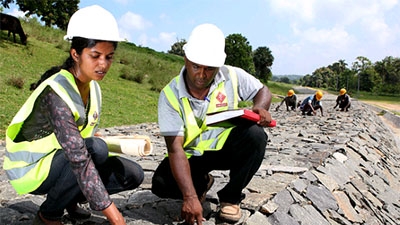September 24, 2013 -- Economic growth doesn’t automatically lead to more equal rights for women, especially in middle- and high-income countries, according to new World Bank Group research that examines women’s legal and economic rights in 100 countries over a 50-year period.
Higher gross domestic product per capita generally isn’t associated with greater property rights or whether women can enter into legal agreements in their own name, even though growth in recent years has made reforms more likely in low-income countries, according to the research papers (here and here) analyzing global trends from 1960 to 2010. In fact, the average number of constraints in middle-income countries in 2010 was the same as that of low-income countries.
By contrast, the removal of discriminatory laws has a lot to do with two social factors: the ratification of international rights conventions and more women in political office. For example, five years after a country adopts the Convention on the Elimination of All Forms of Discrimination against Women, the most comprehensive international agreement on human rights for women, its pace of reform almost doubles that of the previous 15 years.
And, if women hold at least a quarter of all political offices at the national level, a country is more likely to recognize married women as head of households and enact reforms to allow women to control assets. It’s also more likely that married women will no longer need their husbands’ permission to open bank accounts, sign contracts and initiate legal proceedings.
“The weak relationship between income and reforms indicate that proactive engagement is needed to improve women’s rights,” said Mary Hallward-Driemeier, lead author of the papers and lead economist at the World Bank’s research department. “The extra effort will be worth it, because better rights for women lead to important development outcomes that can benefit society as a whole. Our analysis of the database shows reforms help improve outcomes in women’s employment, health and education.”
The research finds improving gender equality has broad development impact, such as greater participation of women in the labor force, especially in the non-farm sector. It also leads to higher wages for girls and women, higher school enrollment and lower adolescent pregnancy, as well as lower maternal and infant mortality.
The project, 50 Years of Women’s Legal Rights, was jointly conducted by the research department and the Financial and Private Sector Development Network, as part of the Women, Business and the Law 2014: Removing Restrictions to Enhance Gender Equality. The database and accompanying research papers, which were funded by the U.K’s Department for International Development, were released on Sept.24.
Overall, the Women, Business and the Law report, the third in a series, finds that legal and regulatory barriers to women’s economic inclusion eased in the last 50 years, but many laws still remain on thebooks. And reforms aimed at improving women’s property rights and legal decision-making ability are continuing.
Just in the last two years, 40 countries introduced reforms to strengthen women’s economic rights across a wide range of areas. Côte d’Ivoire and Togo, for example, recently removed restrictions that forbid women from getting a job without spousal approval. Mali did the same, while also introducing equal inheritance rights for spouses and strengthening married women's property rights.
“Taken together, the 50 Years of Women’s Legal Rights and the Women, Business and the Law databases show that the pace of reform on women’s legal equality has been, and continues to be, accelerating, but much more remains to be done,” said Sarah Iqbal, lead author of the Women, Business and the Law 2014 report.

